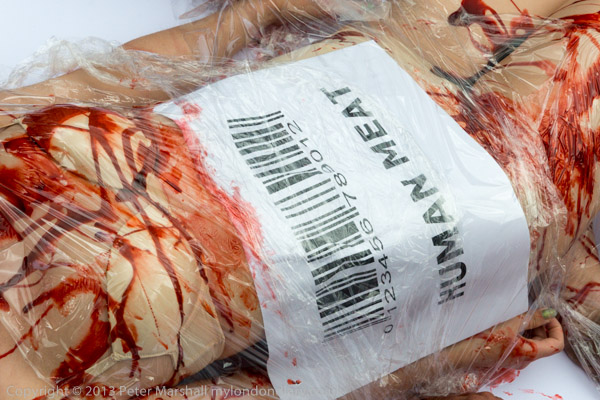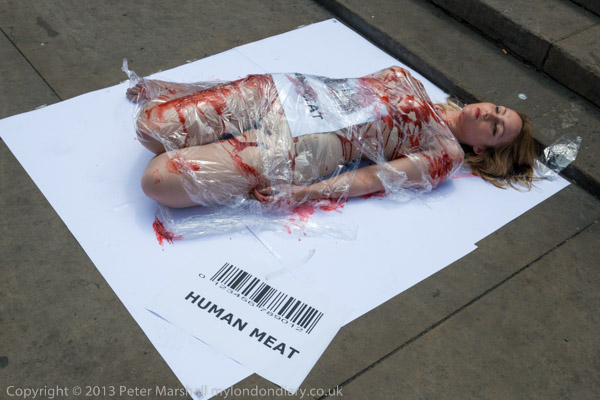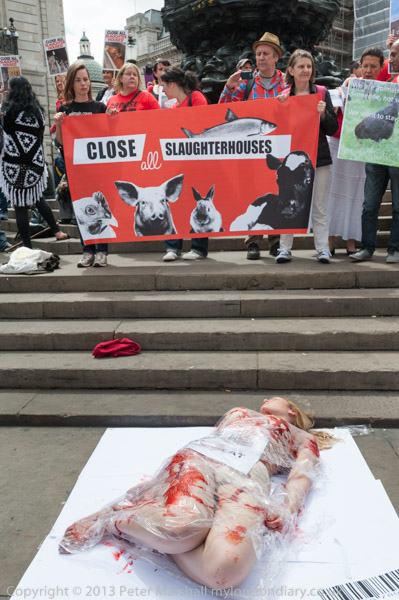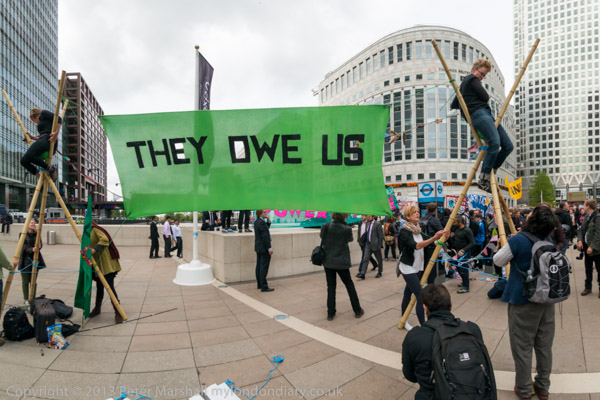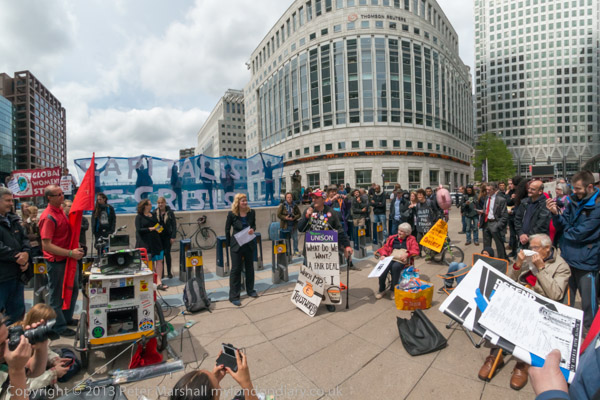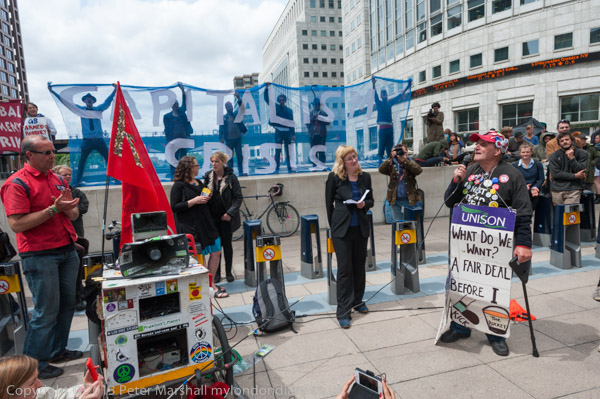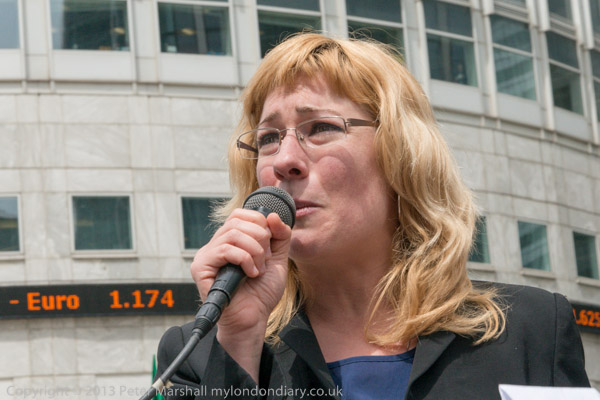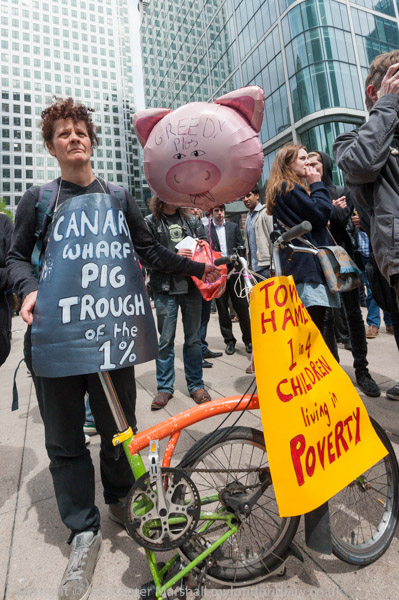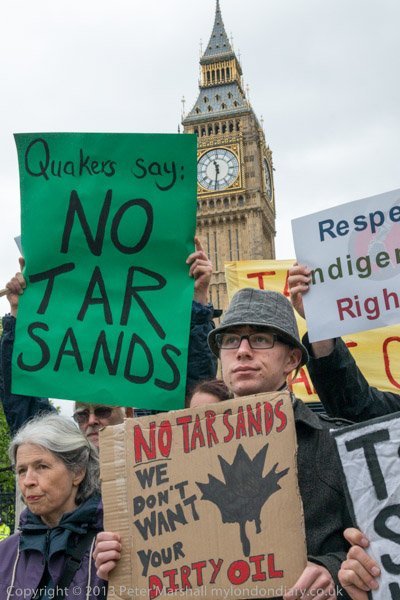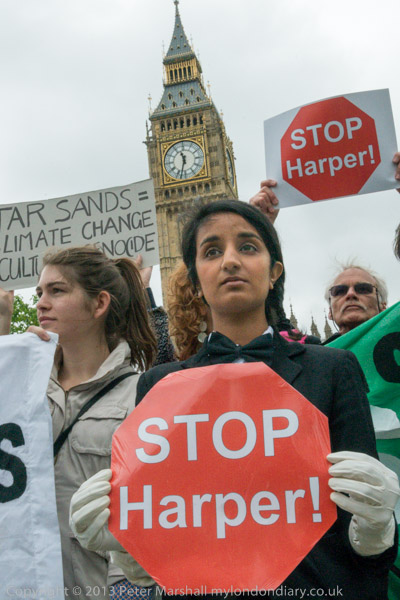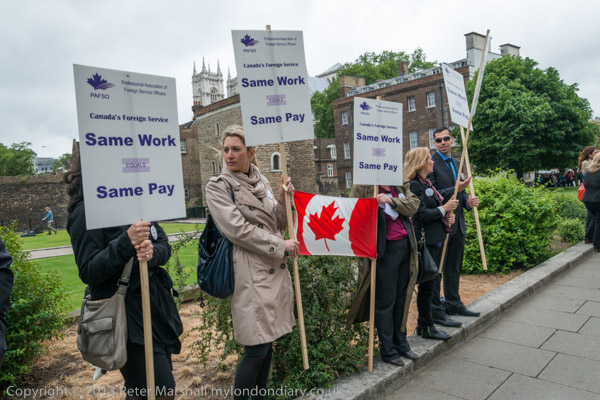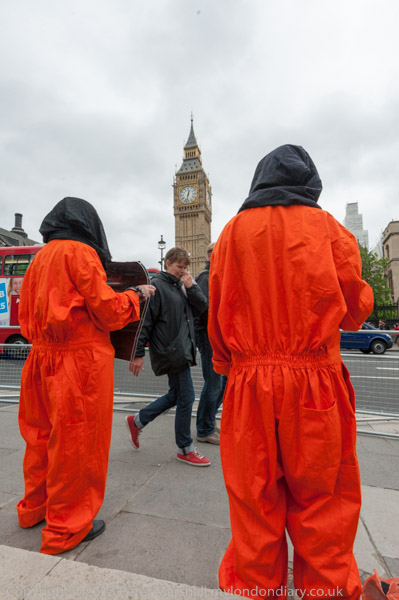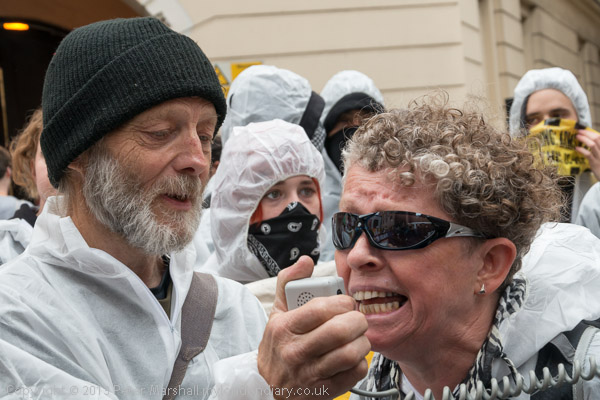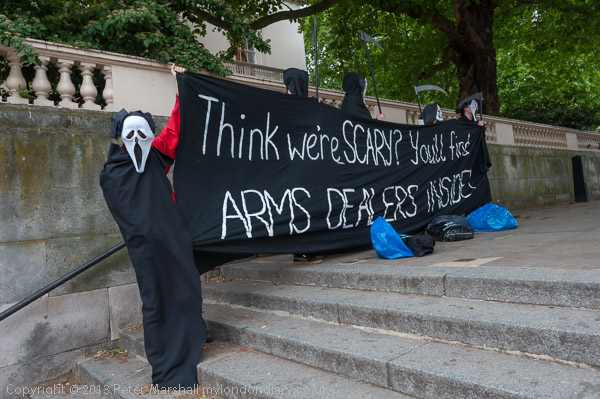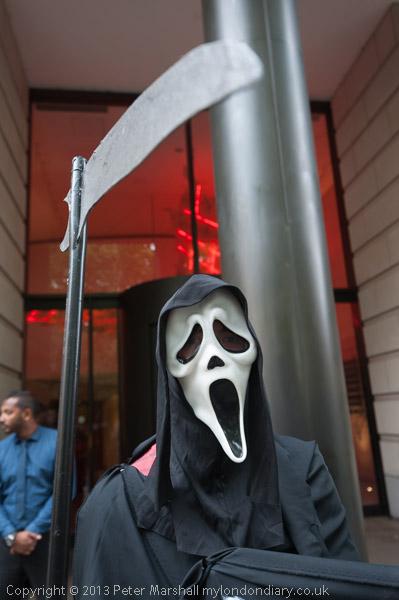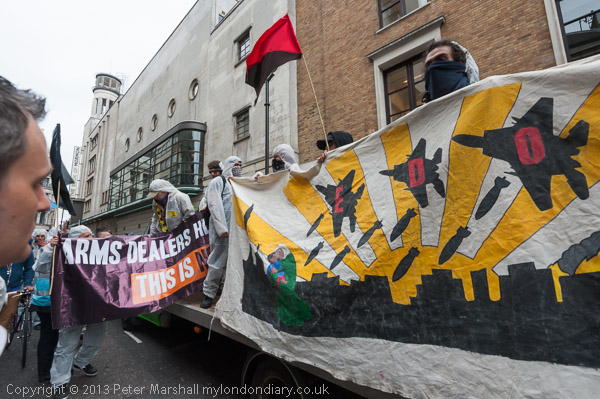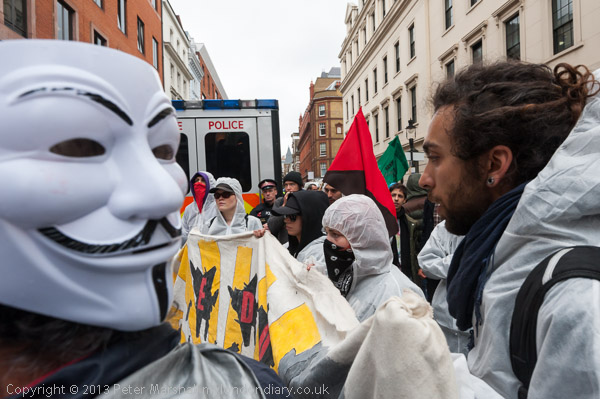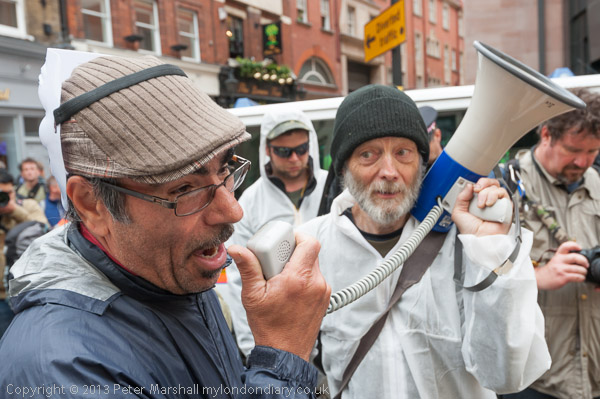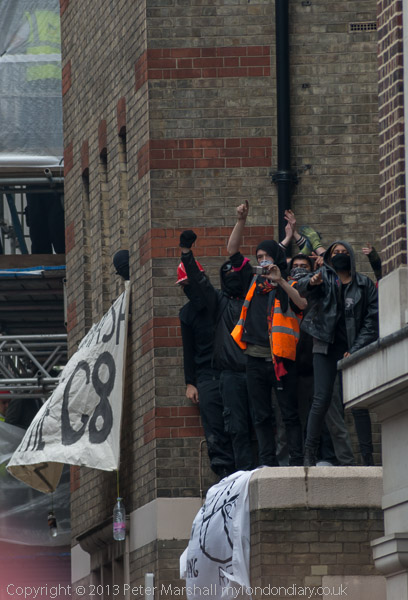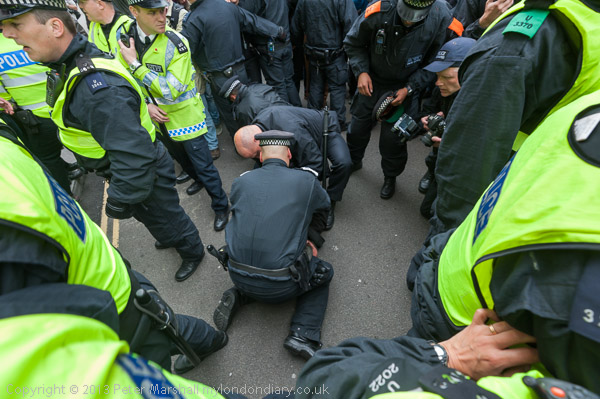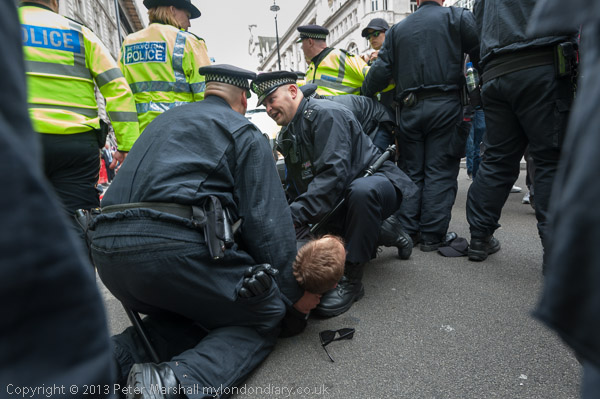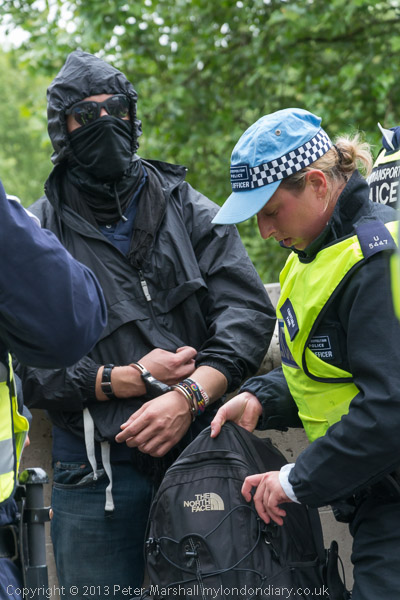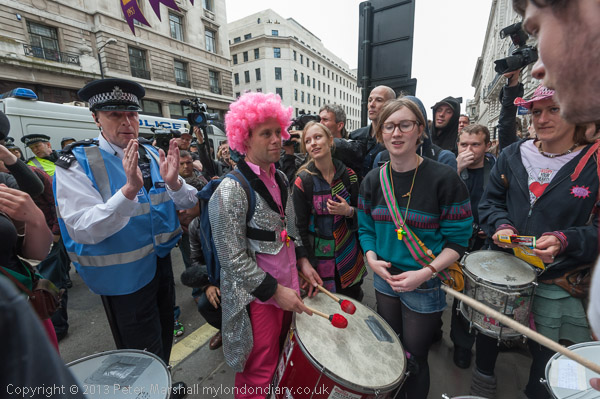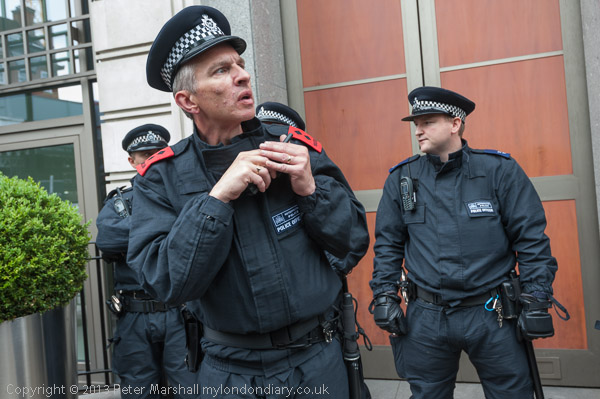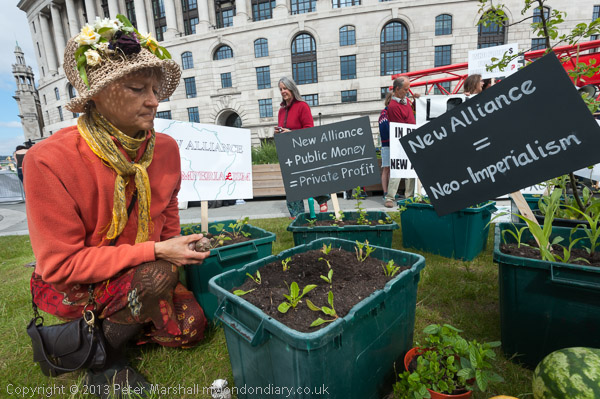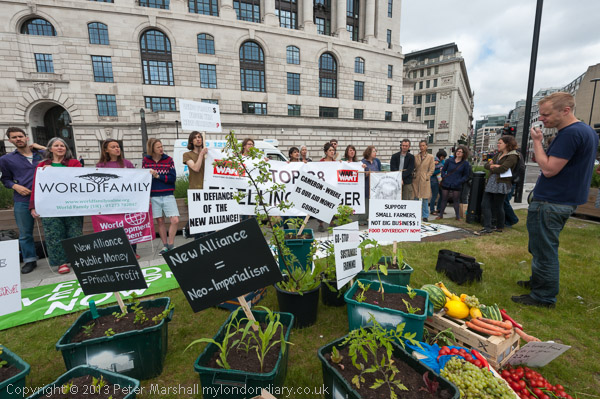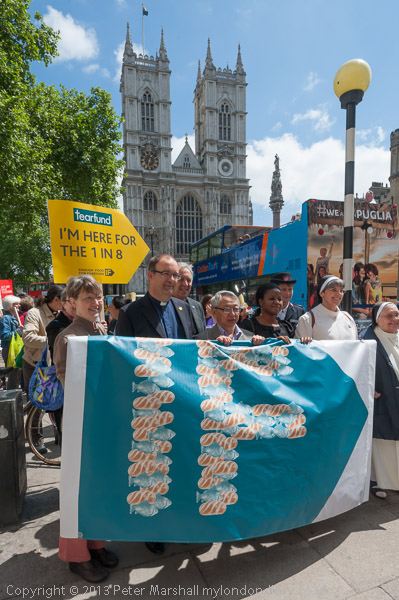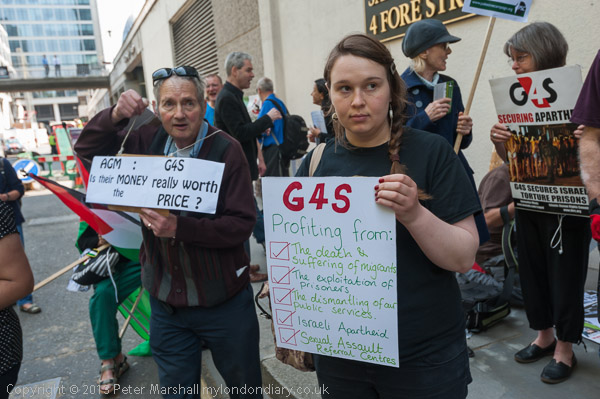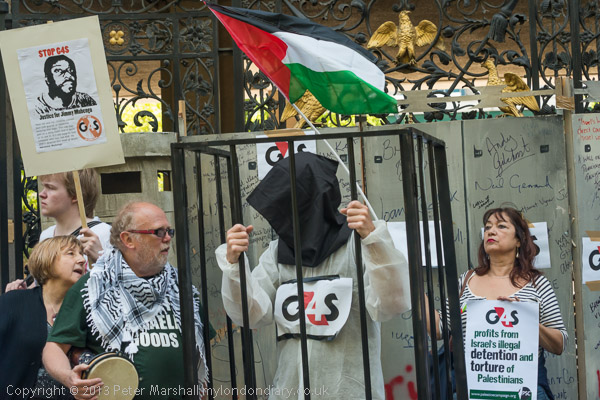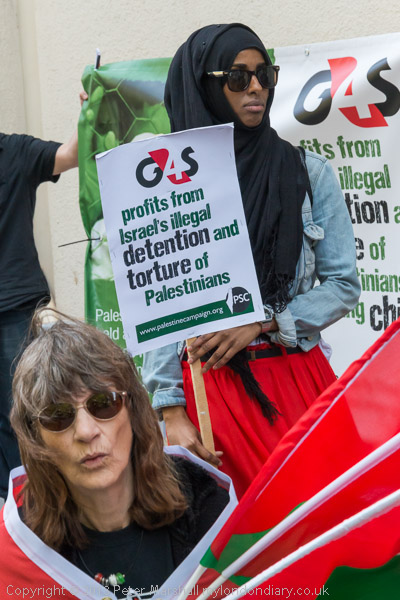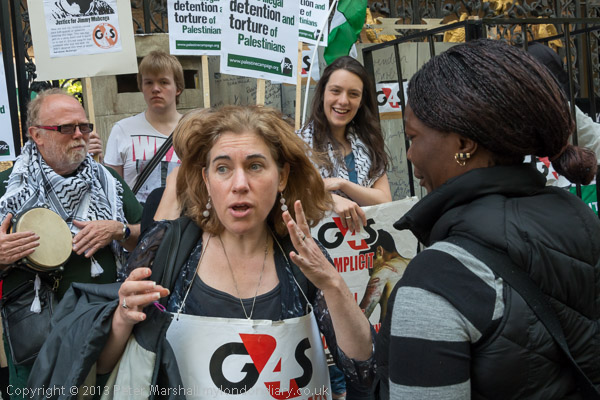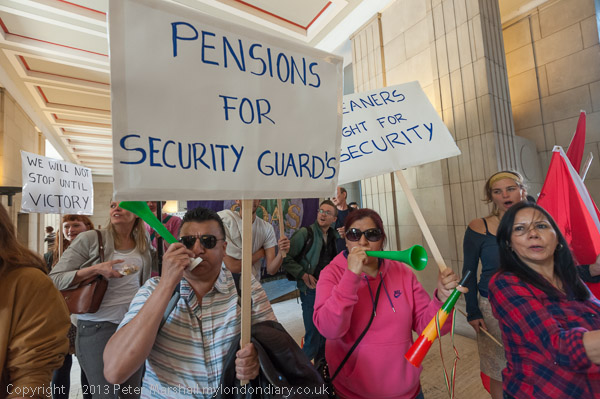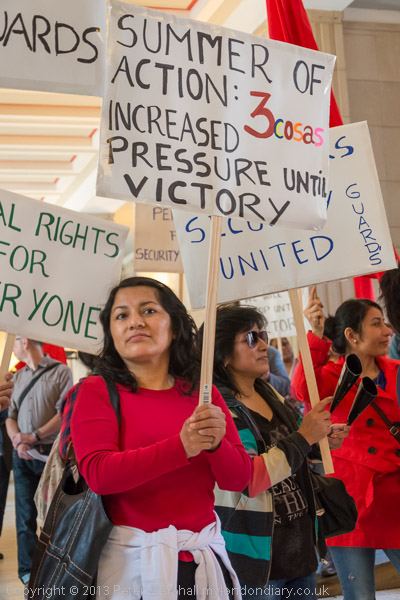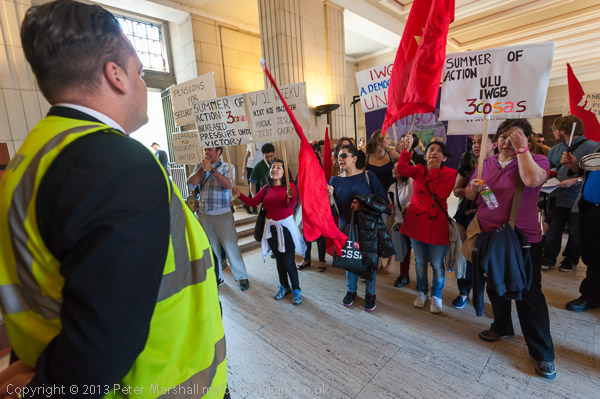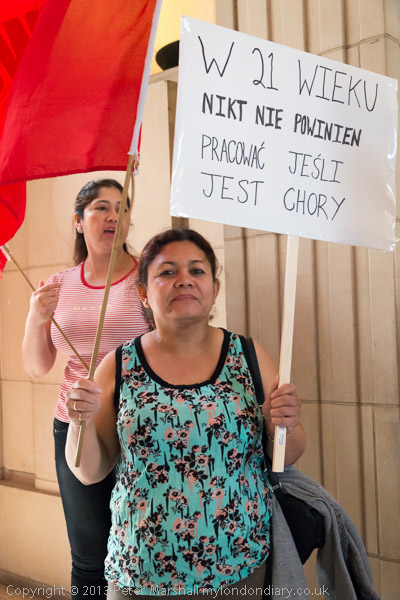[continued from Westminster Afternoon 1]
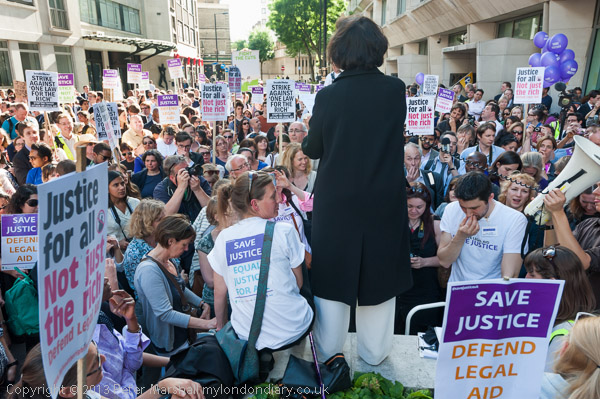
Bianca Jagger was probably the best known of the many speakers at the protest to Save Legal Aid & British Justice, most of whom were lawyers or people from groups supporting those who relied on legal aid, with a few MPs thrown in, including David Lammy, Andy Slaughter and Jeremy Corbyn. It was serious speaker overload so far as I was concerned, not helped by the lack of a written list of them being available. After the first half dozen or so I gave up on trying to write down the names – heard over poor amplification it becomes almost impossible to know what they are or how they might be spelt.
I decided I wanted to try something different for Jagger, and thought that she would still be recognisable from behind – as I think she is, thanks to her black and white clothing and hair. I don’t think it is a great picture, but it does give an idea of the crowd, though less than half are actually in the picture.
Often advice to photographers on covering events tells them they should start with an ‘overall view.’ It’s something that is seldom really possible, or at least almost never possible to make an interesting image – and there isn’t usually a great deal of point in taking pictures that are so boring they will never be used. But it’s often a good idea to at least try something that gives an impression of the scale of the event. Often this is very difficult from the ground level, and many photographers end up holding the camera as high as they can reach above their heads and pressing the shutter with a hope and a prayer – sometimes called a ‘Hail Mary’ shot.
Some use monopods and a remote release (or the self-timer) to gain more height, and I’ve often considered this option, but not yet found one that fits into my bag or I can be bothered to carry. Back in the old days of static press shots, guys carried step ladders, and you still occasionally see these in use, though mainly in places like Downing St pens, rather than on the hoof.
There is a place for ‘overall’ images, and if you’ve not seen Lewis Whyld‘s remarkable 360 degree photojournalistic images it’s certainly worth taking a look at these, but for most of us most of the time they are a waste of time – unless we can find a suitable viewpoint. Sometimes a drone with camera attached would be handy!
But here I was standing on the wide concrete wall of the same flower bed that was being used as a platform for the speakers (probably built solidly enough to stop tanks attacking the Justice Ministry, and certainly more attractive than the fortifications around Parliament.) Solid and wide enough for my increasing lack of balance and terror of even very low heights that stops me climbing on most street furniture these days not to be a problem.
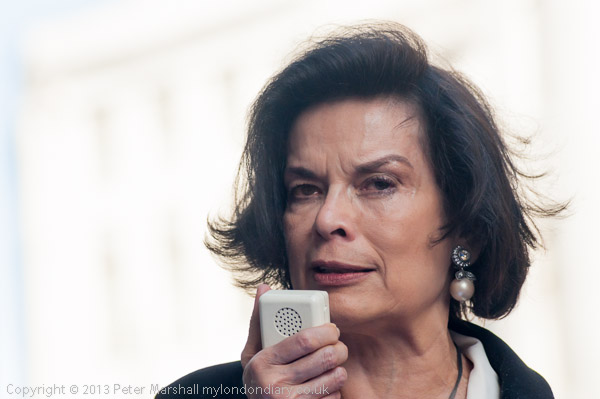
Shortly before taking this image I’d seen Bianca Jagger slip and fall slightly as she was helped up onto the wall. Of course I’d been photographing her at the time, and of course I wouldn’t use those pictures, and I deleted them. But I think she was still looking a little unsettled from her fall when I photographed her speaking a few minutes later.
I was also having camera problems, with the D800E taking a few frames and then freezing up with the error message that appeared to read ‘CD.’ In fact it should and probably did say ‘CArd’ but I broke the flimsy covering over the control panel months ago and repaired it temporarily with heavy duty sellotape – still in place but now not very clear and it isn’t easy to read. (I took the camera in for repair shortly after it broke, but my usual repairers told me they hadn’t yet been trained to work on the camera then and it would have to go to Nikon, and somehow I’ve not got around to it since.) The error message seems obvious now, but in the heat of the moment I couldn’t work out that this meant there was a problem with the memory card!
Usually I have a 16Gb SDHC card in the camera, format it before starting work and very seldom fill it, but I’d come out in a rush and left that card at home in my card reader. The D800E has I second CF slot, and I’d filled the smaller card I keep there, and had replaced it with another old card from the depths of my bag proved to be incompatible with the camera – though probably it had worked OK with the D200 I’d bought it to use with. But there busy working I didn’t understand what the problem was, but found if I turned the camera off and back on I could take a few more frames, sometimes half a dozen before it locked again, and I kept working like that.
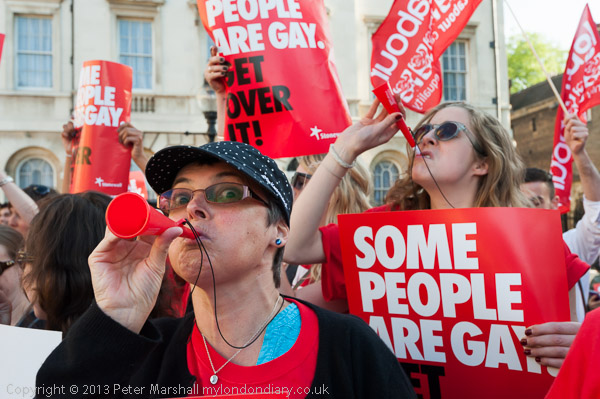
There were more speakers after Jagger, but I’d taken enough pictures and heard enough speeches, and decided to walk back to Old Palace Yard to see how the rival protesters for and against gay marriage were getting on. Numbers were fairly even, but the supporters were clearly making rather more noise.
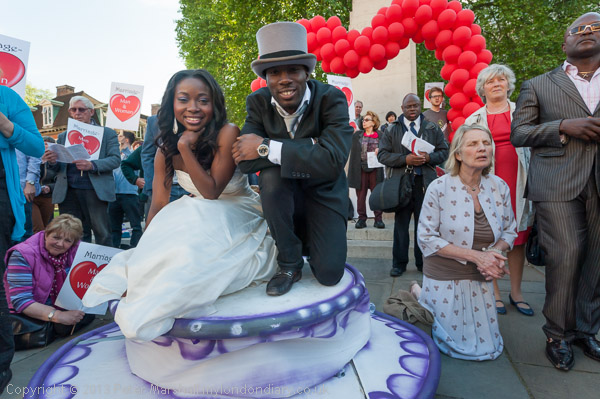
A few from the anti-gay protest stood out, including a posed couple dressed as bride and groom on a ‘wedding cake’, but I found it harder to photograph them those against the bill, not least because of the music. ‘Amazing Grace’ certainly has an amazing history behind it, and is estimated to be performed around 10 million times annually, and it can still be moving, but here I didn’t feel it suited the occasion and the performance grated.
As well as these supporters of ‘Christian Concern’ (who certainly don’t speak for all Christians, some of whom welcome the idea of gay couples being able to make the same kind of commitment as heterosexual couples) there were also some more straight-forward old-fashioned fundamentalist bible-bashers wandering around Westminster, preaching to the traffic and carrying a careful selection of poster-print bible quotations. You can see more from these protests For and against Gay Marriage on My London Diary.
________________________________________________________
My London Diary : Buildings of London : River Lea/Lee Valley : London’s Industrial Heritage
All photographs on this and my other sites, unless otherwise stated are by Peter Marshall and are available for reproduction or can be bought as prints.
To order prints or reproduce images
